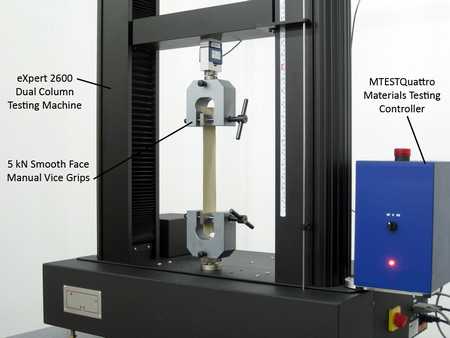Site: Home > Home > News and events
Fabric tensile testing is a method of measuring the strength and elongation of textile fabrics under a specified load. Fabric tensile testing is important for assessing the quality and performance of fabrics for various applications, such as clothing, upholstery, industrial textiles, and geotextiles.
There are many international standards that specify the methods and procedures for fabric tensile testing. Some of the most widely used standards are:

- ASTM D5034: This standard covers the grab test method for determining the breaking strength and elongation of woven, nonwoven, and felted fabrics. The grab test method involves clamping a specimen in the center of its width with a constant-rate-of-extension (CRE) machine and applying a force until the specimen breaks.
- ASTM D5035: This standard covers the strip test method for determining the breaking strength and elongation of woven, nonwoven, and felted fabrics. The strip test method involves cutting a specimen into a narrow strip along its warp or weft direction and clamping it between two jaws of a CRE machine and applying a force until the specimen breaks.
- ISO 13934-1: This standard covers the strip test method for determining the maximum force and elongation at maximum force of textile fabrics using a CRE machine. The specimen is cut into a 50 mm wide strip along its warp or weft direction and clamped between two jaws of a CRE machine and applying a force until the specimen breaks.
- ISO 13934-2: This standard covers the grab test method for determining the maximum force and elongation at maximum force of textile fabrics using a CRE machine. The specimen is clamped in the center of its width with a CRE machine and applying a force until the specimen breaks.
- ISO 13935-1: This standard covers the strip test method for determining seam maximum force and seam efficiency of textile fabrics using a CRE machine. The specimen is cut into a 50 mm wide strip along its seam line and clamped between two jaws of a CRE machine and applying a force until the seam breaks.
- ISO 13935-2: This standard covers the grab test method for determining seam maximum force and seam efficiency of textile fabrics using a CRE machine. The specimen is clamped across its seam line with a CRE machine and applying a force until the seam breaks.
These are some of the common standards used for fabric tensile testing, but there are many others that cover different aspects of fabric properties, such as tear resistance, abrasion resistance, stiffness, crease recovery, etc. Fabric tensile testing standards help to ensure consistency, reliability, and comparability of test results among different laboratories and manufacturers.
Copyright 2022:Qinsun Instruments Co., Limited
High-end textile tester supplier Email:info@qinsun-lab.com | Textile Testing Equipment pdf | Tel:021-67800179 |